Picture this: you're a construction worker and you've traveled to answer the call of duty at your construction site. You check the weather forecast and clouds loom menacingly overhead. Suddenly, the rain begins to pour, causing discomfort and raising safety concerns if your gear isn't up to the task. What do you do? Do you retreat and halt the day's work or forge onwards because you chose the right gear that keeps you dry and warm?
In construction, the answer to rain comes down to one thing - quality rain gear. Rain or shine, construction work doesn't take a break; hence the need for waterproof and tear-resistant rain gear that can keep a construction worker effective during bad weather conditions.
But what makes good rain gear? How does one navigate the wide range of features, materials, and types of rain gear to ensure the very best protection for construction workers?
In this comprehensive guide, we explore the intriguing science behind waterproof garments, provide insights into the features of quality rain gear, delve into the different materials used along with their effectiveness, and highlight a variety of rain gear suited to construction workers. In addition, we unravel some best practices in choosing rain gear and delve into specialized gear tailored for specific conditions.
Welcome aboard as we traverse the fascinating world of waterproof and tear-resistant rain gear for construction workers!
Understanding Waterproofness in Rain Gear
Walking in the rain shouldn't give you the blues, primarily if you're outfitted with the right rain gear. However, not every rain gear provides the same level of protection. As it turns out, the waterproof constitution of your rain gear is the critical determinant in keeping you dry when the heavens open. Whether you're out for a casual stroll or engaging in strenuous outdoor activities, it's essential to understand the waterproof mechanisms at play.
Layers of Waterproof Material
A rain jacket is considered waterproof when its water resistance is high enough to repel a driving rain. If you dissect a typical rain jacket, you're likely to discover several layers. The outermost layer, also known as the face fabric, often has a durable water repellent (DWR) treatment to resist precipitation and prevent the material from getting saturated.
Underneath the face fabric is the real deal - the membrane or coating. This layer is the heart of the waterproofing system, made from densely packed polymer structures to inhibit water droplets' entry while allowing water vapor (sweat) to escape. You may also find an internal lining for comfort against your skin.
An efficient waterproof jacket integrates these layers, each serving its unique purpose in granting you immunity from the rainwater. Speaking of efficiency, the degree to which rain gears can shield you from the rain varies. That's where we venture into understanding the levels of waterproofness in raining gear.
Levels of Waterproofness
Waterproof levels range noticeably, but a practical range for real-world use is 10,000mm - 15,000mm. This measurement defines the amount of water pressure that a fabric can withstand before water seeps through.
Put simply, a jacket with a 10,000mm waterproof rating is designed to withstand 10,000mm of rainfall in a 24-hour period without leaking. This level of water resistance is sufficient for moderate to heavy precipitation, especially if you're not exerting yourself heavily.
But suppose you're an outdoor enthusiast, a mountaineer marveling at landscapes under extreme weather conditions. In that case, a 15,000mm rating would do you justice.
In a nutshell, it's the layers of waterproof material and their proper implementation that make a rain gear effective. Remember, adequate waterproofness isn't limited to rain jackets – pants, hiking boots, gloves, and hats should also be on your waterproofing checklist for a comfortable experience in the rain. But this doesn't mean you should just head out there and start splashing about, of course. Always remember to respect Mother Nature and dress appropriately for the weather!
Embrace the rain, stay dry, and never ever let a downpour dampen your spirit or your gear!
Features of Quality Rain Gear
When you're out and about in the great outdoors, your enjoyment of the experience can be significantly impacted by the weather — especially when an unexpected rain shower starts. That's why it's important to invest in quality rain gear. Rain gear doesn't just keep you dry; it provides an additional layer of protection against the elements. In this section, we'll explore the key features of high-quality rain gear, focusing on waterproof and breathable jackets, waterproof trousers, and some additional bells and whistles that elevate rain jackets from good to great.
Waterproof & Breathable Jackets
At the heart of any rain gear ensemble is a waterproof, breathable jacket. Instead of a basic shell, quality rain jackets are specially designed to prevent water from seeping in while still allowing sweat and moisture to escape from inside. This is achieved through a blend of water-repelling treatments applied to the outer layer of fabric, teamed with interior coatings or laminates that manage moisture.
Some key features to look for in waterproof and breathable jackets include:
- Premium fabrics: These jackets often utilise high-end materials like Gore-Tex or eVent fabrics, which are renowned for their durability and waterproofing capabilities.
- Fully seam-taped construction: This feature indicates that the seams of the jacket have been sealed to prevent water leakage.
- A high collar or tricot-lined chin guard: To prevent rain and wind from entering the jacket.
- Adjustable cuffs and hems: These can be cinched or extended to provide a more custom fit and improved protection from the elements.
Waterproof Trousers
Cued up next, waterproof trousers. Remember, top-to-bottom coverage matters when bracing yourself against heavy downpours. Premium waterproof trousers have similar features to jackets, with durable materials, fully seam-taped construction, and sometimes, side zippers for ventilation. Additionally, look for ones with adjustable waistbands or suspender options for a snug and comfortable fit.
Additional Features in Rain Jackets
But the real show-stoppers are those jackets that go beyond basics and offer up a smorgasbord of extra convenience features. Things like:
- Four-way stretch: For added freedom of movement, look for rain jackets that feature a four-way stretch. This feature allows the fabric to yield to your movements, rather than restricting them.
- Helmet-ready hoods: Particularly useful for cyclists or climbers, these oversized hoods can accommodate a helmet without restrictions.
- Waterproof internal pockets: Keep your phone, keys, or other essentials safe in pockets designed to keep out the moisture.
Thus, rain gear is much more than a utility to keep moisture at bay – it can greatly influence your comfort, safety, and overall outdoor experience. With these features in mind, you're well on your way to selecting rain gear that doesn't just do the job, but does it exceptionally well. Sure, you might have to invest a bit more initially, but the pay-off in performance is often well worth it.
Materials used in Rain Gear and their Effectiveness
Introduction
If you have ever been caught in a downpour without proper rain gear, you know just how miserable it can get. To protect yourself and stay dry, it's essential to have quality rain gear made from effective and reliable materials. But what exactly are these materials? In this article, we're going to delve into the materials commonly used in rain gear – Gore-Tex Infinium Windstopper, Nylon, Polyester, and PVC – and assess their effectiveness.
Gore-Tex Infinium Windstopper
Gore-Tex Infinium Windstopper rain gear stands in a league of its own. It is commonly perceived as being waterproof, when in actuality, it is water-resistant. However, its effectiveness can be significantly enhanced by using Durable Water Repellant (DWR) treatments and taped seams, which make the material more capable of keeping water at bay. These additions make Gore-Tex Infinium Windstopper rain gear an excellent option for light to moderate rain, as it holds the capability to keep a person dry while still allowing for good breathability.
Nylon vs Polyester
When comparing Nylon and Polyester, it's crucial to consider their differing characteristics. Nylon is known for its high durability and better resistance to tears and impacts. On the other hand, Polyester is less durable in the long term but exhibits superior water resistance. This fact doesn't make polyester more effective than nylon or vice versa. Instead, the choice between these two materials depends largely on your specific needs. If you're looking for rain gear that can resist severe conditions and last for years, then nylon may be your choice, while polyester could be a suitable choice if you are more concerned about water resistance.
PVC
Poly Vinyl Chloride, or PVC, is another commonly used material in rain gear production. Not only is it water-resistant, but it's also very durable, making it the ideal material for heavy-duty uses. However, its lower breathability can make it less comfortable for wearers, especially during long periods or in warmer weather. Despite this drawback, if you're preparing for heavy rainfall or particularly harsh weather conditions, PVC could be the perfect material for your rain gear.
Polyester Fabrics
Lastly, let's talk about Polyester fabrics. They strike a balance between water resistance, breathability, and durability. However, when reinforced with a Polyurethane coating (PU), these fabrics gain an even higher level of durability and waterproofness while preserving good breathability. Therefore, if you want a rain gear that can withstand heavy rains without compromising breathability, PU-coated polyester rain gear is an excellent choice.
In summary, the effectiveness of rain gear material primarily depends on your specific needs, whether it's durability, water resistance, or breathability. So, it's important to consider these factors when you're shopping for your next piece of rain gear.
Variety of Rain Gear for Construction Workers
Being a construction worker means working with diligence and skill, but it also means being exposed to the elements. When it's raining, the wet and slippery conditions can add extra challenges to an already tough job. However, with the right Personal Protective Equipment (PPE) – particularly rain gear – workers can ensure their safety while keeping comfortable. Here's our pick of the top waterproof and slip-resistant gear specifically designed for construction workers operating in the rain.
Jackets
Investing in a high-quality waterproof jacket is a must for any construction worker braving the rain. Not only does it shield the wearer from getting soaked, but it also provides an essential layer of warmth on chilly, rainy days. While all jackets provide a measure of protection, waterproof jackets are designed to prevent water from seeping through, keeping the wearer dry. These jackets are typically made of materials like Gore-Tex or Tyvek that repel water.
When choosing rain jackets:
- Look for a jacket with a built-in hood for comprehensive protection
- Pick a rain jacket that features breathable material to avoid overheating
- Choose bright colors – not only are they more visible in low-light conditions, but high-visibility colors meet safety standards in many construction sites
Pants
Waterproof pants are the next piece of rain gear that construction workers should consider. Like jackets, waterproof pants are made from materials that repel water, keeping the wearer dry. They should have a comfortable fit, enabling flexibility for various tasks on the construction site.
Pro tips for choosing rain pants:
- Consider pants with adjustable waistbands for added comfort
- Look for pants with sealed seams to prevent water from seeping in
- Choose pants with reinforced knees, as construction work often involves kneeling
Rain Boots
No list of recommended rain gear would be complete without a mention of rain boots. Sturdy and waterproof, these boots are typically made from rubber or PVC, which provides excellent slip resistance, a must-have feature for potentially slippery construction sites.
Key features to look for in rain boots:
- High-cut design to prevent water from entering
- Steel toe caps for extra safety
- Non-slip soles for better traction on wet surfaces
Rain Mittens
Last but not least, we arrive at rain mittens. While they might not be the first piece of gear you think about, rain mittens are crucial for keeping hands warm and dry during rain. As with other rain gear, look for mittens that are waterproof and durable.
Keep these things in mind when shopping for rain mittens:
- Ensure the mittens are insulated for extra warmth
- Check for a proper fit as bulky gloves can hinder manual work
- Opt for mittens with adjustable straps to secure them firmly
To wrap up, the importance of appropriate rain gear for construction workers cannot be overstated. It plays a pivotal role in ensuring safety and comfort during the wet and slippery conditions that come with working in the rain. Remember that not all rain gear is created equal — make sure to always prioritize quality, safety features, and comfort when shopping for your construction rain gear.
Best Practices in Choosing Rain Gear
Regardless if you're a construction worker or an outdoor enthusiast, choosing the right rain gear can make a significant difference to your comfort, protection, and overall experience when facing various weather conditions. It is key to consider factors such as comfort, material selection, durability features like waterproofness and breathability, as well as tear resistance and tensile strength. Let's delve into these considerations to help select the optimal rain gear for your needs.
Comfort and Protection
The predominant aim of rain gear is to protect you from adverse weather; however, it should not compromise on comfort. Like the waterproof work jackets for construction workers, your choice of rain gear should offer comfortable protection against elements and assist in keeping you dry while working or during your outdoor activities. Here’s what you need to consider:
- Ensure it fits well; it should be neither too tight that impacts your movement nor too loose that loses its protective function.
- Make sure it provides suitable coverage. Remember, your rain gear will protect only the areas it covers.
- Prioritize breathability and insulation to avoid overheating or feeling cold.
Material Selection
Choosing the right material for your rain gear is just as critical as getting the fitting right. The material will determine how well your gear can resist water, its durability, and comfort.
It's worth considering materials like:
- Nylon, known for its durability and resistance to abrasion.
- Polyester, valued for its ability to dry quickly and maintain its shape.
- Gore-Tex, coveted for being waterproof yet breathable.
Waterproof and Breathability
The magic words in rain gear are ‘waterproof’ and ‘breathable.’ Ideally, your rain gear should be both. A truly waterproof garment will prevent water from penetrating, keeping you dry even in heavy rain conditions. On the other hand, breathability ensures that sweat evaporates from the inside, keeping you comfortable and dry at all times.
Some jackets incorporate pit-zips, and other designs have built-in ventilation sections, while others use specific materials to enhance breathability.
Tear Resistance and Tensile Strength
Construction workers, hikers, and outdoorsy folks will surely agree that the tear resistance and tensile strength of rain gear are significant factors for durability and longevity. It should be able to withstand a good deal of abuse without ripping. The higher the tensile strength, the more the material can resist breaking under tension.
Select rain gear engineered with reinforced patches at high-stress points or made with rip-stop materials to increase lifespan. In any outdoor situation or any active job, durable rain gear can make an immense difference to your comfort, safety, and performance.
Choosing the right rain gear does more than just keep you dry; it enhances your experience, comfort, and protection, allowing you to perform to the best of your ability no matter the weather. Be mindful of these factors, explore different options, and choose wisely.
Specialized Rain Gear for Specific Conditions
All too often, people mistake any rain coat for proper rain protection. Yet, not all rain gear is created equal; some come with highly specialized benefits to suit certain conditions. For instance, cold weather rain gear not only serves to keep you dry, but it also provides you with an extra layer of warmth on those chilly, damp days. Alternatively, high-visibility rain gear might be the order of the day if you find yourself working in the construction industry, braving the elements while ensuring safety is never compromised.
Cold Weather Rain Gear
The battle with elements during cold weather can be significantly demanding. It’s not just about keeping dry; it’s about staying warm too. That's where cold weather rain gear steps in. Designed specifically for those frosty, soggy settings, this type of rain gear typically includes additional insulation or lining for extra warmth alongside your rain protection.
- Insulation: Insulated rain gear uses materials like fleece or down to trap body heat, keeping you toasty even in the coldest climates.
- Thermal Lining: Some cold weather rain gear features a thermal lining in addition to insulation. This lining adds extra warmth and comfort, further shielding your body from the cold.
- Waterproofing: Beyond warmth, waterproofing is a critical attribute of this rain gear, ensuring you stay dry despite the persistent rainfall.
Rainy days in cold weather no longer have to mean layers upon layers of clothing. With specialized cold weather rain gear, you can stay warm and dry with a single, practical garment.
High-visibility Rain Gear
Perhaps your battle isn't with the cold, but visibility. Whether you're a construction worker, road crew member, or anyone who has to be outdoors in lousy weather, staying visible is paramount to your safety. High-visibility rain gear affords exactly this assurance.
- Bright Colors: High-visibility rain gear often comes in bright, easily noticeable colors like neon yellow, orange, or green. These vivid hues ensure you stand out, even in the gloomiest rainfalls.
- Reflective Strips: Accents of reflective material are usually sewn into the gear. These enhance your visibility in low light conditions or at night.
- Waterproof and Windproof: In addition to visibility, these gear also provide reliable protection from the rain and wind, keeping you dry and comfortable throughout your workday.
Understanding your specific needs is essential when it comes to selecting rain gear. Whether your concern is bracing the cold or ensuring your safety on a construction site, there's definitely rain gear that's been specially designed for your situation. Staying dry has never been more strategic.
Conclusion
Choosing the right rain gear is crucial for construction workers who are exposed to diverse weather conditions. It's not just about beating the rain; it's about comfort, durability, and safety while performing strenuous tasks. Always prioritize quality built rain gear boasting characteristics like high breathability, excellent waterproofing, and tear-resistance.
Remember, the best rain gear is the one that best suits your specific needs. For construction workers, opting for a brand that specializes in professional-grade rain gear like Hurricane Raingear can be a wise choice. Their handcrafted, 100% waterproof and rip-resistant rain gear offer the durability required for challenging construction work. So, choose wisely, and don't let the rain stop you from conquering your day at the construction site. Be well-prepared to face whatever weather comes your way. Happy working!
Frequently Asked Questions
-
What are the benefits of using waterproof and tear-resistant rain gear for construction workers?
Using waterproof and tear-resistant rain gear offers protection against rain, wet conditions, and tears or rips, ensuring that construction workers stay dry, comfortable, and safe while working.
-
What are some key features to look for in waterproof and tear-resistant rain gear?
Some key features to look for include waterproof materials such as Gore-Tex or PVC, sealed seams to prevent water penetration, adjustable cuffs and hoods for a customizable fit, reinforced knees and elbows for durability, and reflective elements for increased visibility.
-
Can waterproof and tear-resistant rain gear be used in extreme weather conditions?
Yes, high-quality waterproof and tear-resistant rain gear is designed to withstand extreme weather conditions, including heavy rain, strong winds, and rough environments typically encountered in construction work.
-
How should waterproof and tear-resistant rain gear be maintained?
To maintain the effectiveness of your rain gear, it is recommended to follow the manufacturer's care instructions. This may include regular cleaning, using mild detergent, avoiding fabric softeners, and drying the gear properly after use.
-
Are waterproof and tear-resistant rain gear expensive?
The price of waterproof and tear-resistant rain gear may vary depending on the brand, quality, and additional features. While some high-end options can be expensive, there are also affordable options available without compromising on quality and functionality.



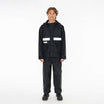
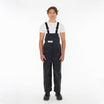
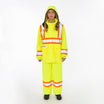
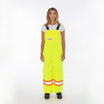
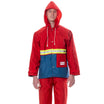
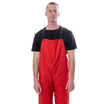
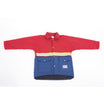
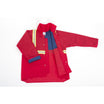
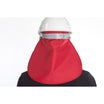

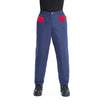
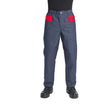
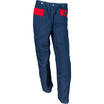
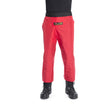
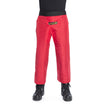
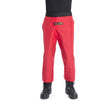
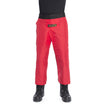
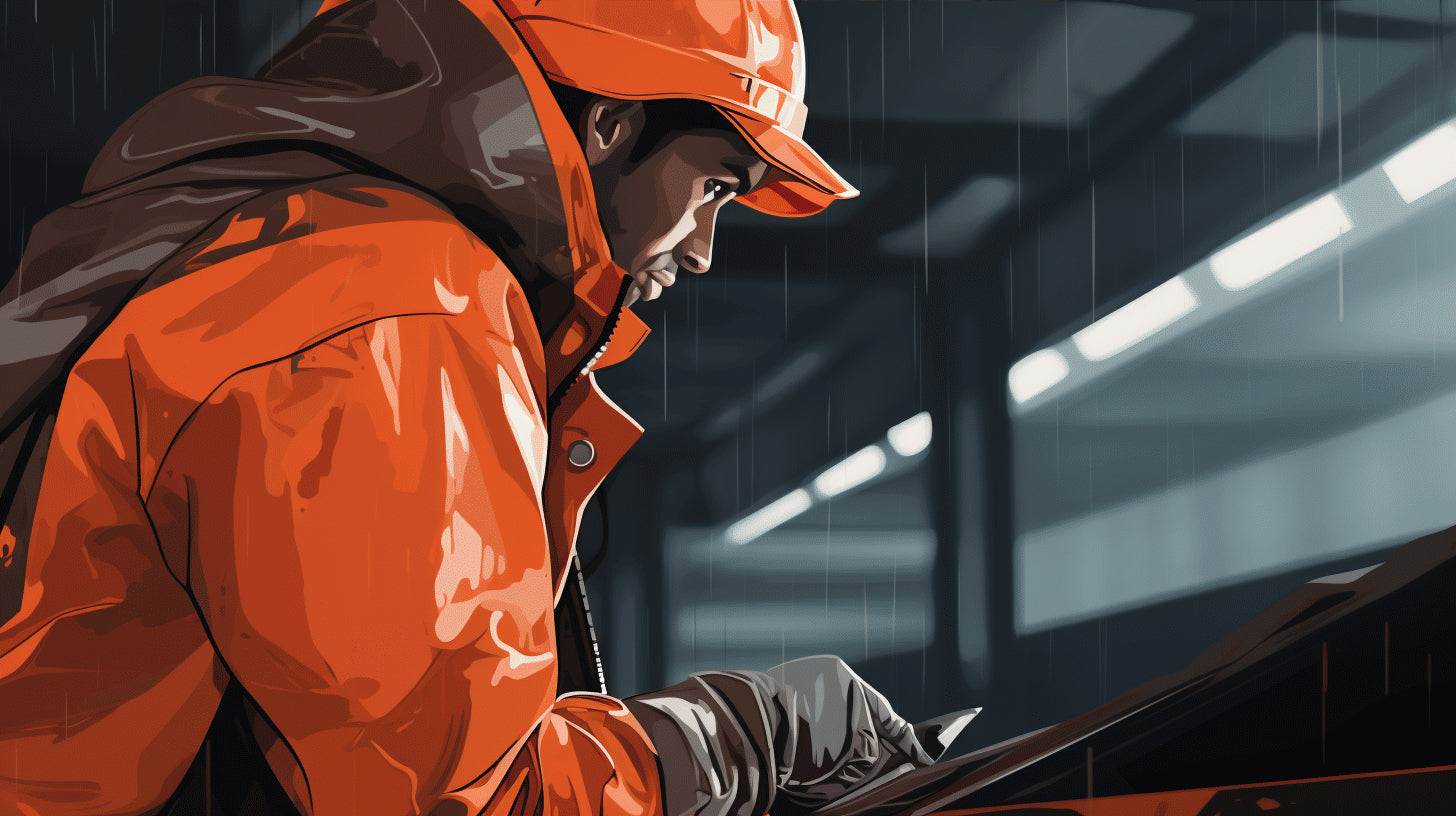
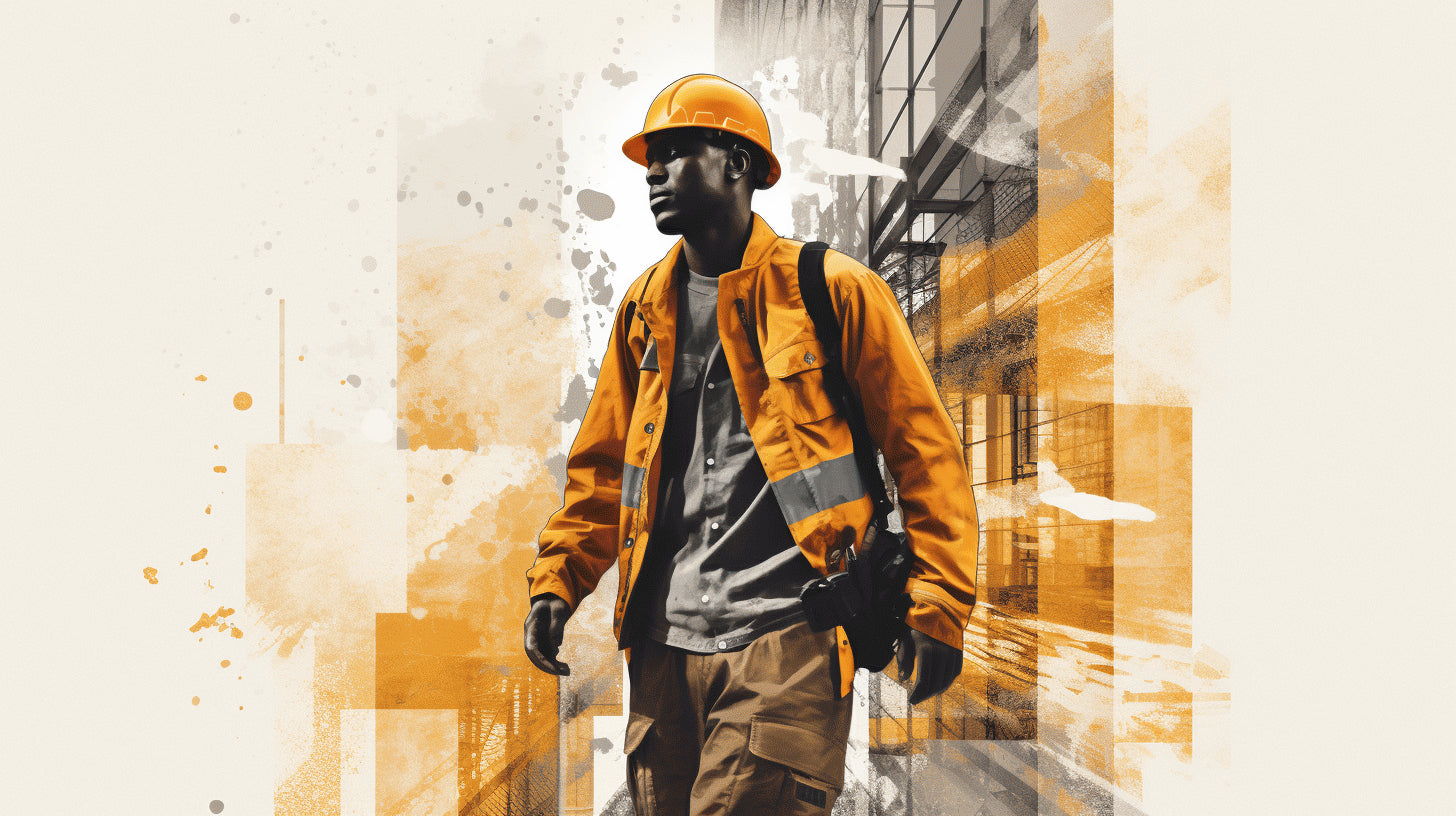
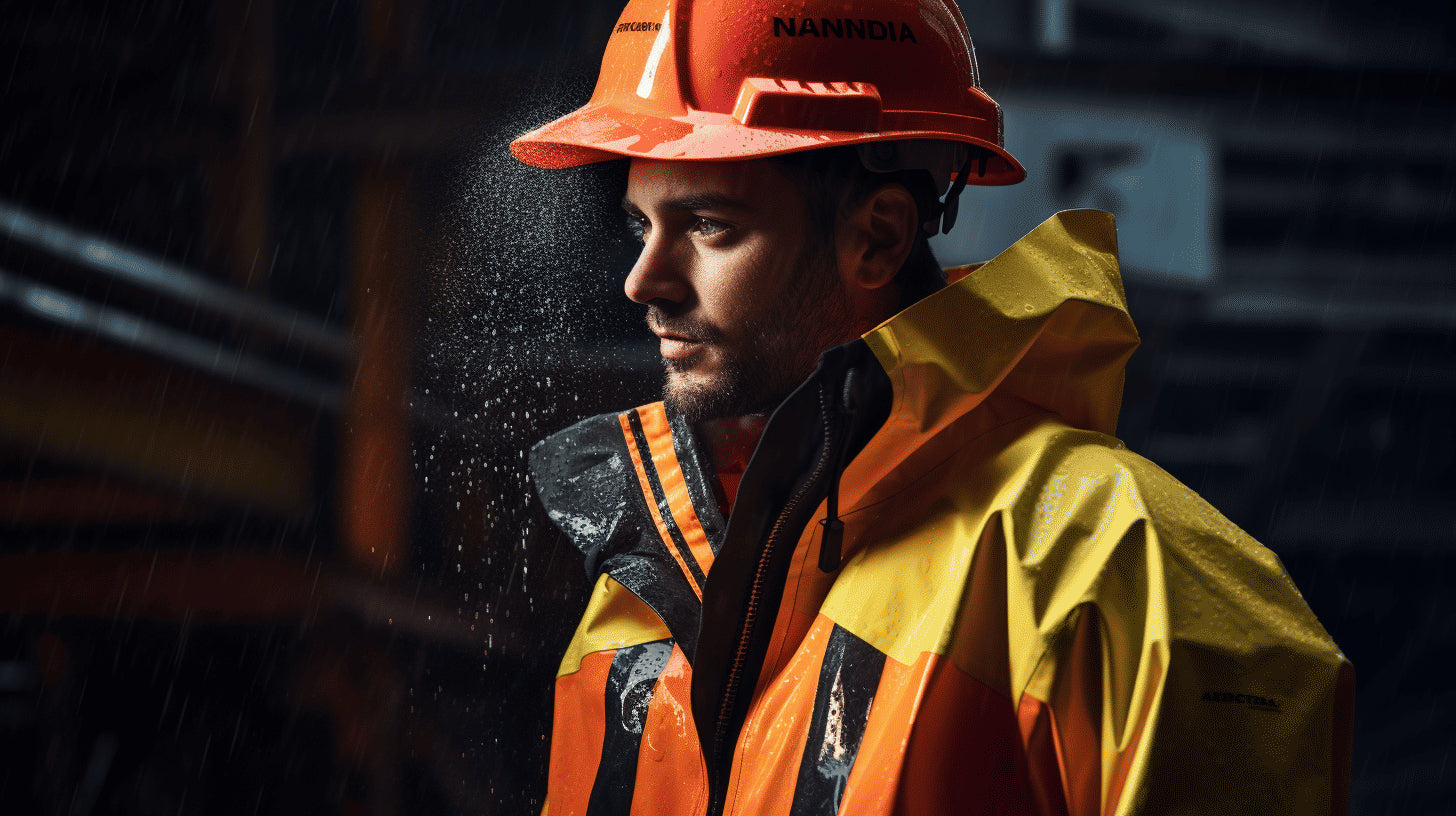
Leave a comment
This site is protected by hCaptcha and the hCaptcha Privacy Policy and Terms of Service apply.